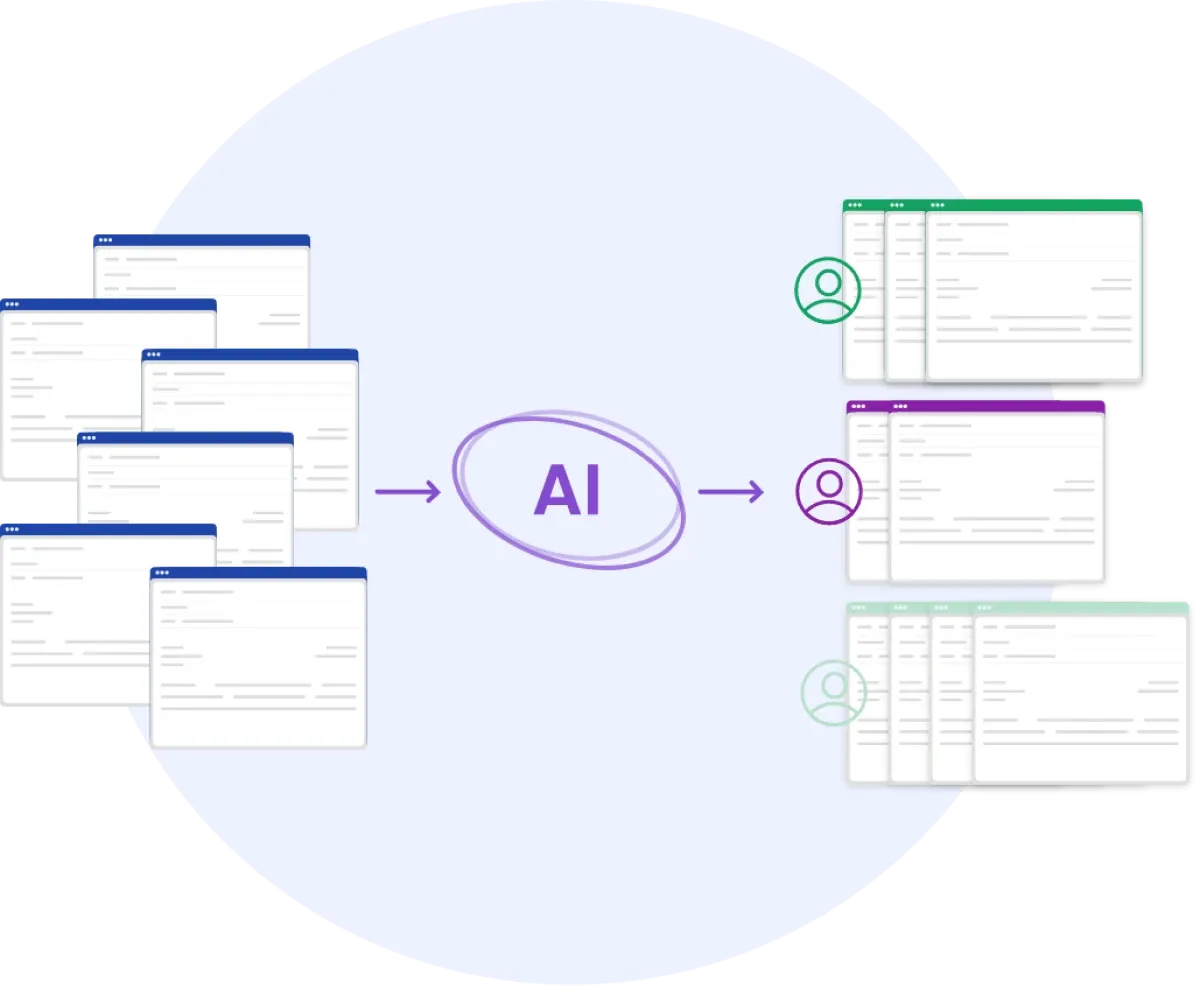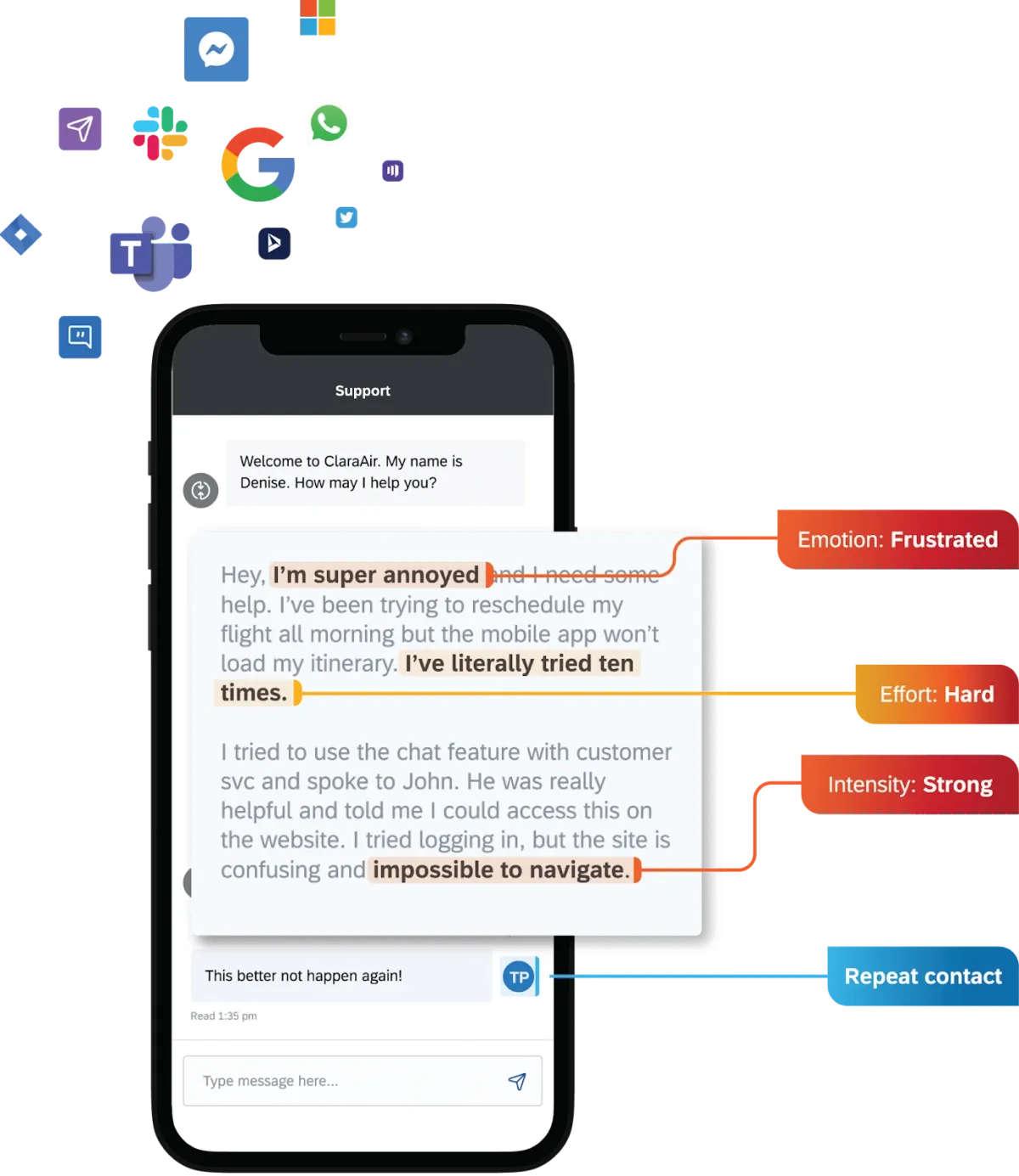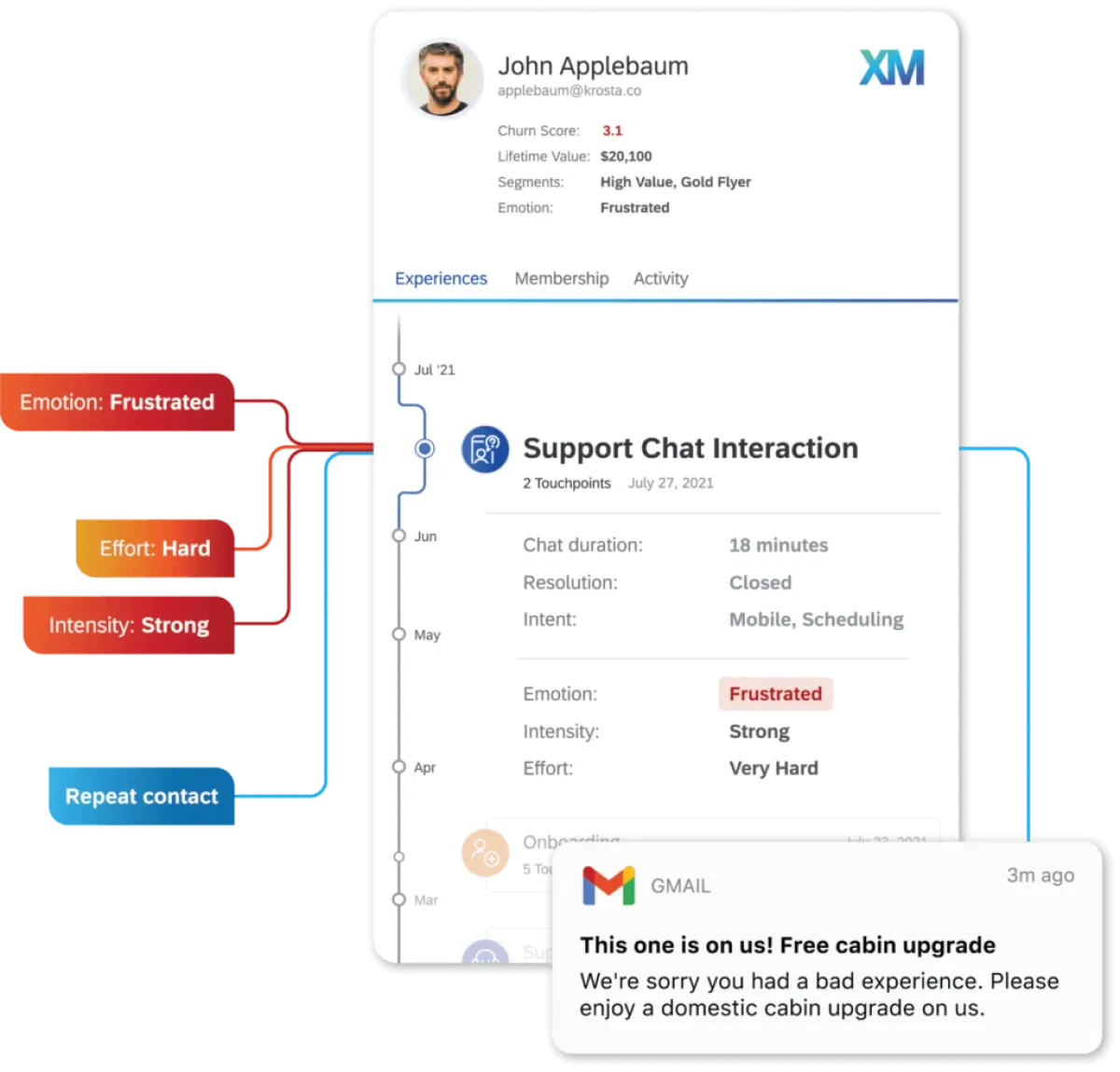Examples of AI in customer service: 10 SaaS success stories
Efficiency, personalization, and speed are critical in support operations. These examples of AI in customer service show you how to do it right.

Artificial intelligence is beginning to touch every aspect of every business. It’s promising to totally transform the way that we work and the load that we place on technology versus real people. Customer service is one area that’s primed to benefit from AI tools.
And luckily, there’s no shortage of tools and features out there that have been created specifically with the goal of helping customer service teams work more efficiently and more effectively.
With AI, customer service teams can:
- Reduce their average handling times (AHT), which looks good for reporting and creates a better customer experience.
- Improve their employee experience since your agents will have less tedious work on their plates
- And scale personalization efforts without relying solely on human input.
Since AI is at such a pivotal point right now, there’s no telling the possibilities it can introduce in the future. But for now, there are a few key ways that teams can use AI today to level up their operations.
Here are some of my favorite examples of AI in customer service.
1. Call routing
For many teams, your phone lines are one of the most active sites for your customer service team. And often, once customers get to the point that they need to talk to someone on the phone, their needs are urgent. This means that no matter how efficient your team is on the phone, a little help is always welcome.
That’s why one of the best examples of AI in customer service is AI call center solutions like AI call routing and call support.
Let’s look at Poly.ai to see how this works in practice.


Put simply, their tools use AI to get callers to the right place quicker. Their tools can identify caller intent and match them with the best place to transfer them. What makes them different is the fact that they let users say what they want candidly. Rather than having to phrase their asks carefully or choose from a predetermined list, the AI allows customers to speak in their own words.
As the brand puts it, they can “accurately route calls without relying on keywords.”
Poly.ai’s phone support extends past just routing, too. They can also answer customer’s frequently asked questions, ask clarifying questions, and make notes about details that customers ask so that your human agents have all the information they need if a customer gets transferred to them.
2. 24/7 real-time customer engagement
Having a support agent available at all times is ideal to be able to support customers who may need help immediately, but this can also be expensive. Especially for leaner, more early-stage teams, it’s just not practical to have a support agent on-call at all times.
Luckily, with AI, you can fill this need for a fraction of the cost. Our virtual AI agent, Copilot, is an always-on support agent, fueled by conversational AI. The experience feels incredibly similar to talking to a real human. Rather than being confined to restrictive scripts or dealing with the frustration of a bot not understanding them, customers can talk in their own, natural language and receive answers in that same language.
Whether they have questions about how to use a certain feature, how to update settings in the platform, or anything else your users may need to get the most out of your product, Copilot gives them immediate solutions.

What really sets this product apart from a run-of-the-mill chatbot, though, is its ability to move the support experience out of the chat and into a more hands-on environment in your product. Instead of providing simple text responses, Copilot can reinforce support by providing relevant interactive product tours, budges, or checklists.
3. Email organization
Just like your call center is a high-traffic center of your customer service operations, so is your email. It can be easy for hundreds of emails each day to pile up and overwhelm your customer service team.
AI tools like Mailytica can help to automate a lot of the processes surrounding your emails, making it easier for your team to manage the volume of messages coming in.

There are a few ways it can do this:
- Routing - AI can analyze the email content to classify the messages and automatically route them to the right place.
- Parsing - Instead of relying on humans to pull out important information from emails, the AI tools can automatically capture data from emails and push them to other platforms you’re integrated with.
- Auto-responding - There are likely a lot of repetitive emails that you get, asking for the same information. AI tools can interpret the content of the emails you get and push out tailored responses immediately.
- Classification - Tools like Mailytica can automatically categorize new emails by topics, helping you leverage emails better for automated workflows, assignments, and prioritization.
4. Customer experience analytics
The best customer service teams take more than just a reactive approach to creating a better customer experience. Since they’re on the front lines, in direct contact with your customers, they’re constantly bringing in all of this data about how customers are actually experiencing the product.
Often, though, digging into these analytics to make a more proactive approach possible ends up being more of an ideal than a reality. When teams are bogged down with tons of manual tasks, analysis is often the first priority on the chopping block.
If teams put all of the aforementioned examples of AI in customer service to use, they’ll hopefully free up some more time for this strategic work. But AI tools can actually speed up this data analysis itself, too.
One of the best tools for this is a tool previously called Clarabridge, but it’s now part of the Qualtrics XM platform. The platform is constantly pulling in data on all of your customers’ interactions with your platform, and now they can layer AI on top to make sense of everything.

Using text analytics, they can identify with pretty decent certainty what exactly your customers want, what’s frustrating them, what their greatest needs are, what motivates them to contact you, and how they feel about your brand overall. With this in-depth analysis, complex behaviors and emotions that may have previously been difficult to extract insight from can be transformed into actionable, prioritized action steps.
The XM platform can also take automated actions to immediately address any customer concerns or frustrations.

Overall, this should help customer service teams be more proactive and strategic, hopefully creating a more interactive relationship between them and other departments like product teams, sales, customer experience, and marketing.
AI is better for customer service teams and for customers
Integrating AI into customer service operations isn’t just about improving efficiency to save time/money. Sure, that’s one of the goals, but it shouldn’t be the only objective. In order for the investment in AI tools to really be worth it, both customers and support teams need to benefit.
If a lot of the more mundane tasks that CS teams are typically burdened with are shifted away to AI, not only can your team bring a more positive, relaxed attitude to the workplace, but they’re also able to dig into the more meaningful, human work that only they can do. They can use the extra time and the extra tools to lean into more creative problem-solving.
On the customer front, the benefits are clear, too. They have access to more robust, more personalized support at any time of the day. AI makes it easier than ever for them to understand the full capabilities of your product and get solutions if they ever run into a problem.
